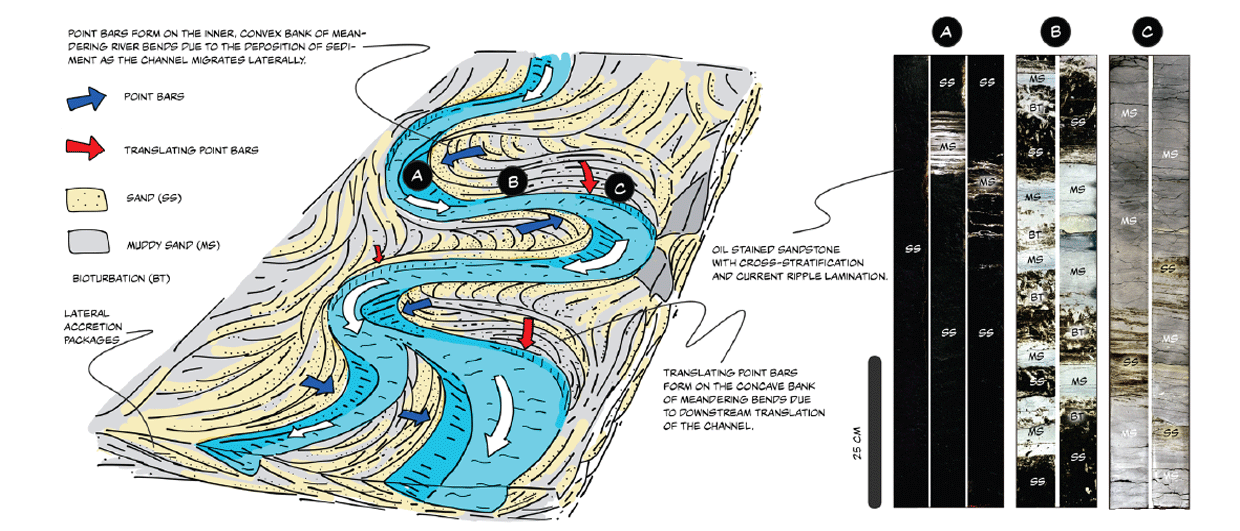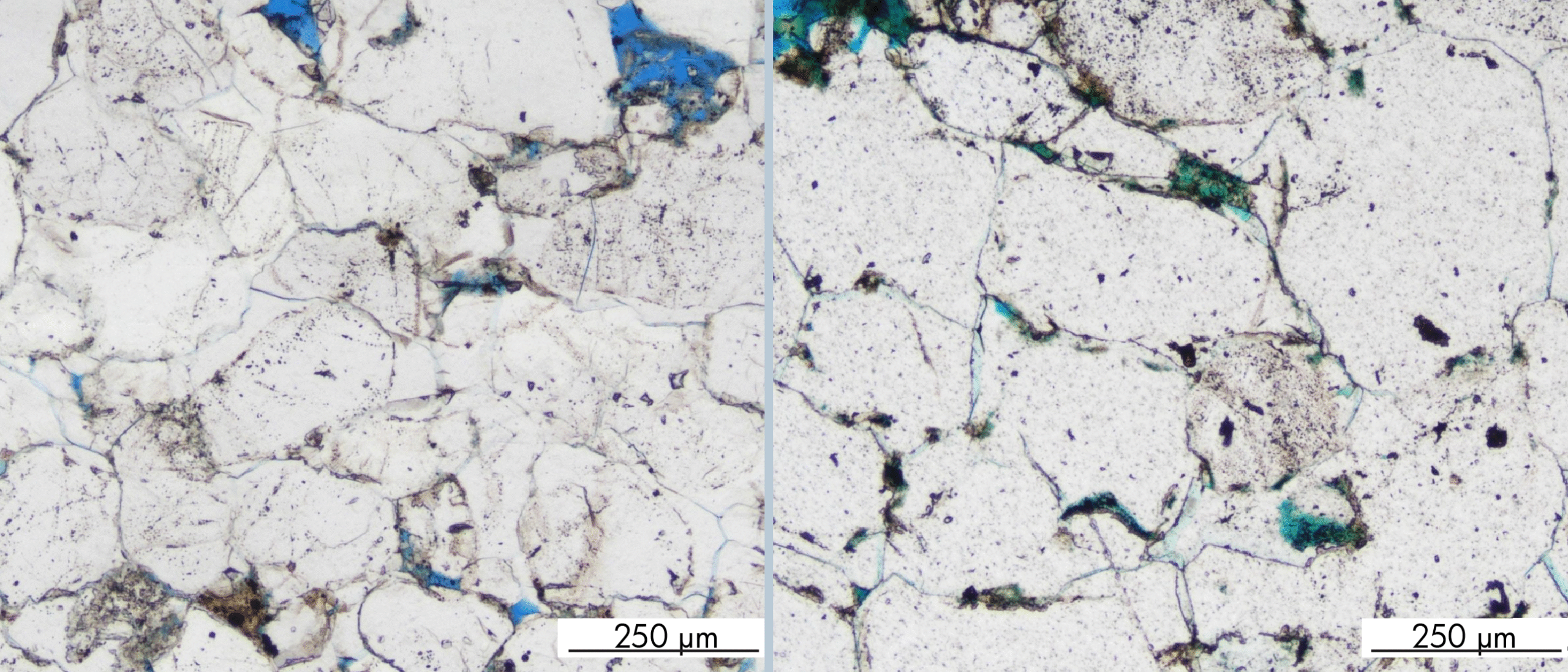In the captivating world of sedimentary geology, point bars offer a window into the dynamic processes sculpting fluvial and near-coastal landscapes.
The classical model of (expansional) point bars is best known from fluvial systems, where sediments accumulate in their inner bends. As the river flows, its velocity wanes on the inner side of the meander, allowing part of its bed load to settle.
Morphologically, point bars are characterized by laterally dipping accretion surfaces, recording the progressive buildup of sediment as the river migrates laterally. This is further illustrated by the diagram shown here.
In a paper recently published in Sedimentology, another building block of meandering channels was meticulously described by Suzanne Fietz, who currently works at BGR in Hannover, Germany. Based on a combination of high-resolution seismic data and an extensive core description exercise using data from the McMurray Formation in Canada, she has been able to better distinguish translating point bars from the more “classical” and expansional point bars.
In her paper, she describes that translating point bars are readily identified in plan-view by their concave-shaped scroll bar patterns, which contrast with the convex scroll-bar patterns typifying expansional point bars. In fluvial settings, translation occurs when flow impingement takes place against erosion-resistant channel banks, leading to partial flow deflection into an upstream circulating eddy current. In a more sea-ward environment, tide-dominated translating point bars are often affected by bidirectional flow. Ebb-directed flow dominates sediment transport in the lower part of the channel and enforces seaward accretion of the bar.
The diagram also shows the relative positions of translating and expansional point bars within a meandering channel system, further illustrated by three cored intervals from different parts of the sedimentary system. What is striking in this example is the decrease in sand content when moving from the expansional point bar (A) via the upstream part (B) to the more downstream part (C) of the translating point bar.
Identification of these architectural elements does not necessarily lead to the conclusion that one is dealing with a fluvial system though. Similar gross depositional characteristics can be observed in both coastal, estuarine and fluvial settings. The study of cores and ichnofacies is always required to further point to the depositional environment at play.



